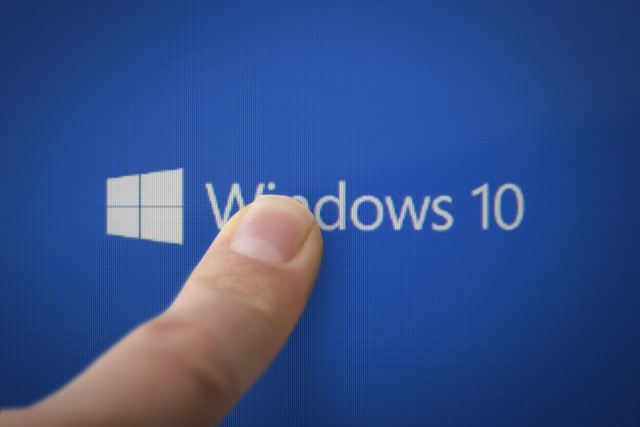Five reasons why VDI is a good match for Windows 10

The first anniversary of the launch of Windows 10 was marked by Microsoft revealing that the operating system enjoyed one of the fastest adoption rates in the history of Windows. The software giant announced that over 300 million devices are now using Windows 10. Adoption rates for its latest operating system are 145 percent higher than for Windows 7 and 400 percent better than for Windows 8.
But however popular Windows 10 might be in terms of user adoption, it still brings a lot of the baggage of its predecessors for IT professionals to deal with, including painful migrations, time-consuming end-point management and patches. Even with improvements to minimize these issues, Windows 10 can still cause headaches as IT administrators attempt to migrate their endpoint devices without negatively affecting their users.
The good news is that VDI can help to address these issues. As a technology, VDI has reached maturity just at the time when IT professionals are looking for a way to simplify upgrades and patches, reduce downtime and become more agile, so they can respond faster to the rapidly changing IT landscape and provide a better experience for everyone.
A range of advancements in VDI are making virtual computing a reality for many organizations that need a way to provide a good user experience, reduce costs and simplify their end user computing strategy. VDI and Windows 10 can work very effectively together to provide a range of benefits:
1. Reduced Storage Requirements
Over the last few years, VDI solutions have become less expensive and much easier to manage by IT generalists. Most VDI solutions no longer require huge storage systems, complicated infrastructures or deeply experienced IT teams to administer them.
Historically, storage platforms presented the largest barrier to VDI adoption. Many of the traditional solutions required large and expensive storage infrastructures that took a lot of time to setup, deploy and administer. Past storage systems were built to address capacity over performance, which frequently led to a poor user experience and added complexities. VDI assisted with shaking up traditional storage architecture by pioneering the need for both capacity and performance.
By dramatically reducing the amount of required storage, these advancements are helping to make virtual desktops less expensive than traditional PCs. As a result, organizations can use VDI to deliver a seamless Windows 10 environment with a smaller footprint and an environment that is simple to setup, maintain and support. In addition, by using VDI, Windows 10 users are able to benefit from an experience that is superior to a PC because of faster SDS and server computing performance.
2. Easier Management and Scaling Through Hyper-Convergence
Software defined computing is paving the way for the introduction of hyper-converged computing, which is ideal for VDI deployments, especially when it comes to Windows 10. This approach allows administrators to replace complex infrastructures of mixed hardware by consolidating all of their compute, storage and networking into single servers that are much easier to manage.
Hyper-converged solutions remove the guesswork of scaling and sizing VDI by implementing a modular and predictable architecture that is easy to support and maintain.
Combining the simplicity of hyper-converged solutions with the efficiency of SDS is helping to make VDI the optimal platform for delivering Windows 10.
3. Simplified Updates and Deployment
With every operating system upgrade, all hardware and software assets must be tested and validated. If any part of the configuration isn’t compatible with the operating system, the whole migration can come to a screeching halt. This can have a knock-on effect on productivity when the desktop PC or notebook is taken out of commission to address the upgrade issue.
By contrast, VDI creates a modern virtual workspace with a standardized hosting infrastructure that simplifies management and enables users to be productive on any endpoint device and from any location.
4. Elimination of End Point Management
The amount of time required to migrate to Windows 10 is significantly reduced in virtualized settings by eliminating the requirement for management of endpoint devices. With VDI, there is no need to create images for different machines. Virtualization also reduces application testing times because it uses a standardized infrastructure platform.
Also, if an application doesn’t work on Windows 10, it can be virtualized on the supported operating system and seamlessly delivered to a Windows 10 environment.
5. Relief From Painful Patch Management
In the wake of Windows 10’s one-year anniversary, Microsoft announced that it was making drastic changes to its patching approach. Among them was the elimination of their "Patch Tuesday" model, which IT organizations have built their maintenance models around over the years, in favor of "Monthly Rollups" that address security issues and reliability issues in a single update. Each rollup will supersede the previous month, so there will always be only one update required. Organizations with modern virtual workspaces will be able to respond quickly and easily to these kinds of updates with fewer testing cycles allowing for more rapid innovation.
Once the Windows 10 environment is virtualized, ongoing support is greatly simplified. Administrators can apply updates, patches and changes centrally on the same platform for greater consistency -- and do it more quickly. By building a VDI environment with Windows 10, it is possible for an organization to centrally deliver all of its desktops, applications and entire infrastructure.
VDI provides organizations with a new era of sophisticated and secure end user computing that enables administrators to respond faster to the demands of their users. VDI has reached maturity just in time to help businesses deliver a Windows 10 environment that’s not only the best experience for their users, but also for their IT organization.
Published under license from ITProPortal.com, a Future plc Publication. All rights reserved.
Photo Credit: Anton Watman / Shutterstock.com